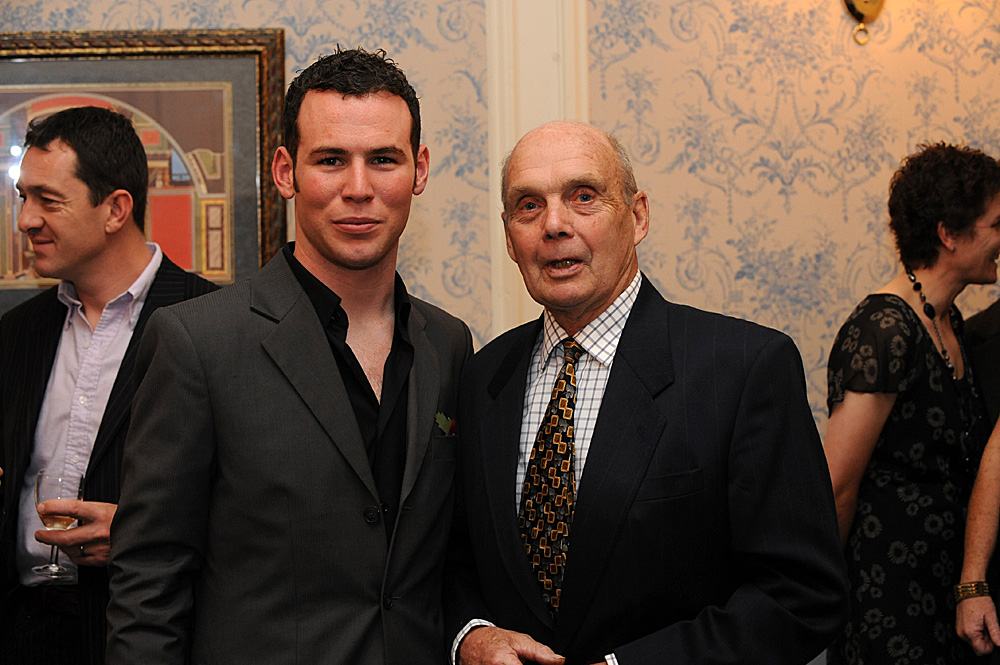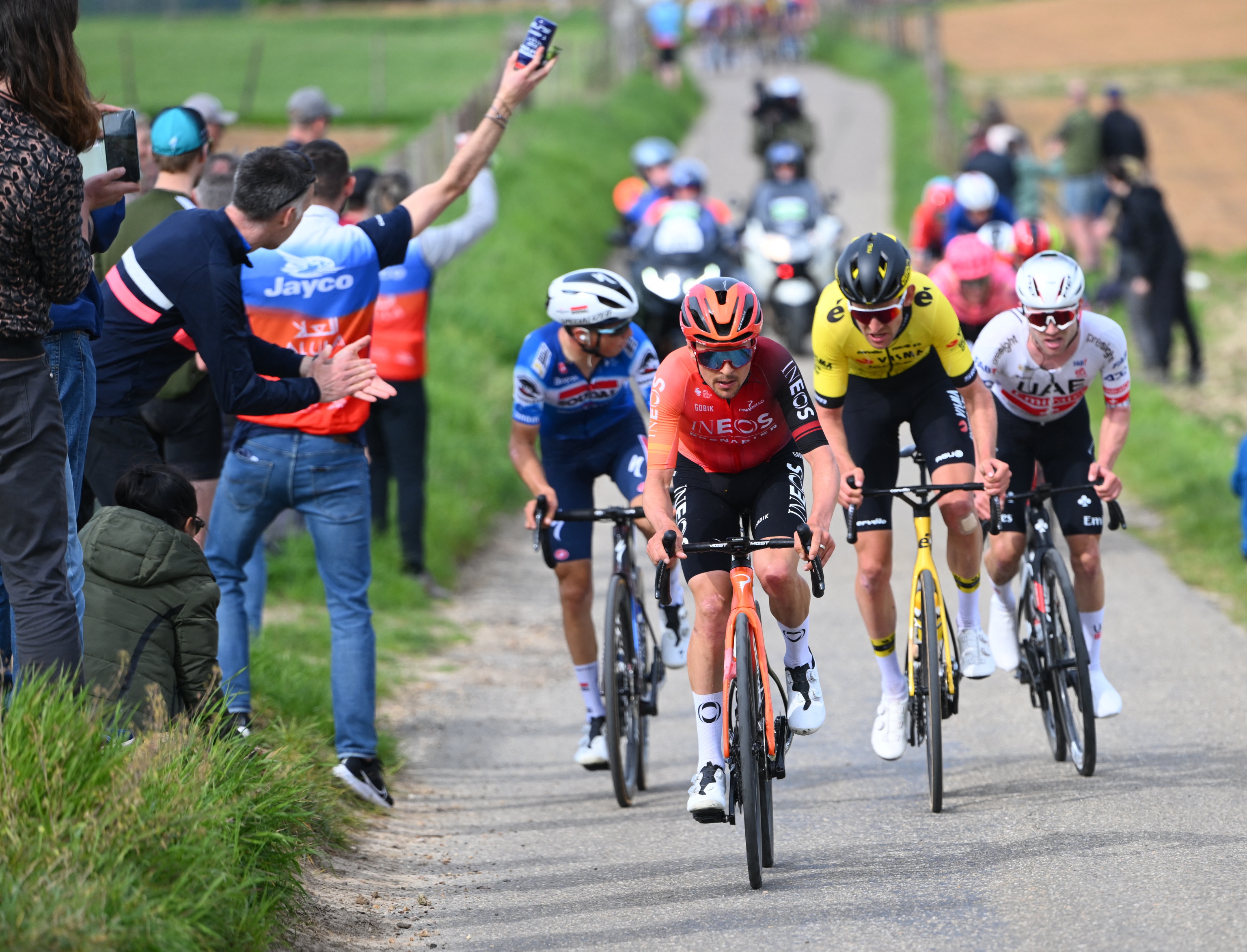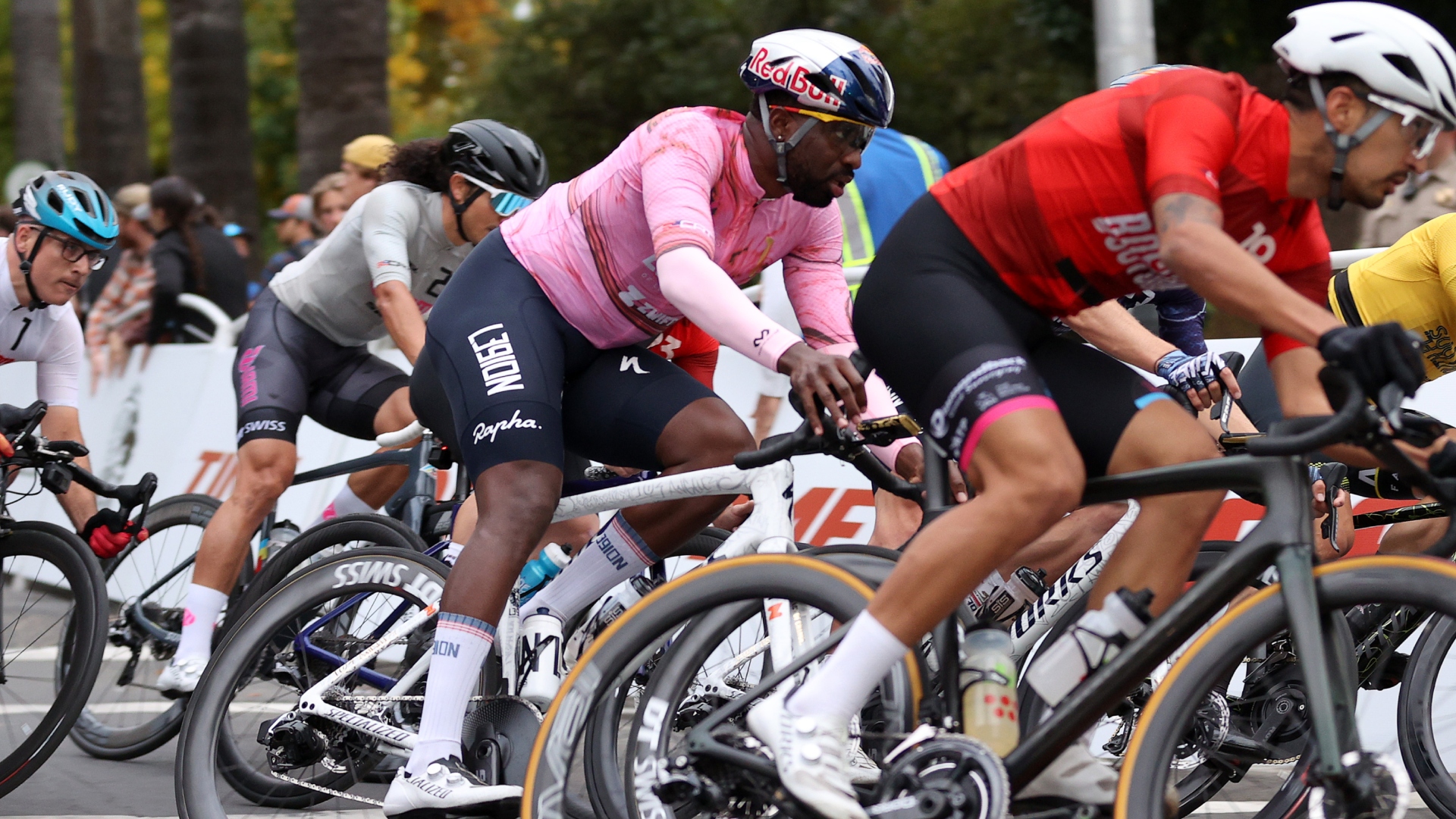Brian Robinson at 80

Forty-eight years since retiring from the sport, Brian Robinson still rides.
He gets out on the Saturday ride to Langsett with his mates. "Only forty miles now," he says dismissively.
For a man who recently had cataracts and a serious groin problem, it's nothing to be sniffed at.
"I try to ignore it, but I will never be rid of. It destroyed the lymph glands, I've got a silly lump in the muscle. It's a pain in the foot, it always feels as though it's red hot, it's uncomfortable," he says.
It's typical Robinson, a genial Yorkshireman fighting against being cooped up outside with the same dogged tenacity he used to become the first Briton to establish himself on the Continent and win a Tour de France stage.
Robinson lay the path for British successors from Simpson to Cavendish, gaining results that would take decades to better: third in Milan-San Remo, fourth in La Fleche Wallonne, as well as fourteenth in the Tour de France.
There's a British Legends feature on Brian Robinson in tomorrow's edition of Cycling Weekly.
Get The Leadout Newsletter
The latest race content, interviews, features, reviews and expert buying guides, direct to your inbox!
Here are some unseen excerpts from the interview.
Robinson on getting into cycling
I was 13 when I wanted to join the road club, and you couldn't join until you were 14 in those days. That would be '44 when I got into it, mainly through my brother who was already there, if you like; just a case of going with him, nearly three years older than me.
The path was already there. To be honest, I wanted a motorbike, but that was out of the question!
My first year was with the guys that had retired and come back during the war, really experienced guys who knew what they were doing. That was a good apprenticeship. I was 14 when we did a tour of Scotland with the club.
The weather was absolutely foul, we were doing 100 mile a day, and I was the one with the primer's stove on the frame, because it was self-catering youth hostelling. In lunchtime in Scotland these days, towns were a long way away and you had to take stuff with you and make it.
‘It's time we were off now,' they'd say and the bloody stove would still be on the footpath, I had to pack it all away and chase after them.
It got so bad that by the middle of the second week, we packed up. It had rained and rained and rained. That was a baptism into touring, if you like.
On a typical weekend's ride
We used to ride at Sutton Coldfield, we used to ride down on the Saturday afternoon, 95 miles, we clocked it, after finishing work at noon.
The race started at 6.30 on Sunday morning, because you had to be out of the park by 9.30 for the public to come in, so you're riding on closed roads in a park, then you rode back home... so you'd have 250 miles in a weekend, possibly! And you didn't think anything of it. If you wanted to race, that's what you had to do.
On not being overawed
That never bothered me. I thought ‘if he's got two legs, I've got two legs, I've got to go'.
On learning to descend
I learnt to descend behind [1950 Tour de France winner] Ferdi Kubler in the 1955 Tour. I caught him at the top of the Ventoux and he's saying ‘push Ferdi, push Ferdi', and I said "bollocks, Ferdi!"
And he came, whoosh, past me downhill, and I thought ‘I caught him uphill, he's not going to leave me downhill,' and that was my first real lesson in descending.
Kubler was mad actually. I used to leave 20 metres, see what they did and I did the same - if they came to grief, I had a bit more braking space! I could ride with Anquetil, Bobet, etc. to the top of the hills and when you saw the finish of the mountain, I'd eat, drink, get my newspaper and . I was on the ball for going downhill, I caught them in 5-6 kilometress, no problem.
You can mark where they are, see the line they take and either improve it or stop before they fall off. I could still descend on my own - that's how I won that long stage in '59.
On helping a young Tom Simpson
For a year, I took him under the wing. For example, in the Tour Sud-Est, he fell off going down a hill somewhere.
I waited for him and said "Sit on my wheel and don't budge." And bloody hell, he fell off that as well! I waited again, got back to the bunch and he won the bloody race. I don't know whether he were concentrating or not.
On pushing himself
I try to find an explanation really, you just go to the maximum - above maximum, I suppose. How can I put it?
My fashion of climbing hills has always been to get into a regular rhythm at the bottom, get your breathing sorted and accelerated later up the hill. I couldn't stay with Bahamontes or Gaul, they went up in steps, but nobody else could. But Anquetil and co. ploughed away until they went again.
On making it on the Continent
For the luck to be happen, you've got to be there. You can't just sit in your chair and wait for it to happen. The more you try, the more application you put into something.
On today's British professionals
I'm really pleased that they've gone so far; okay, the amenities and facilities are much better but it's still bloody hard riding a bike, no matter what's behind you.
The moment of truth is still there, you've got to ride your bike.
Brian Robinson's palmares
1952
National hill climb championship
1954
Tour d'Europa, stage six
Tour of Britain, second
1955
Fleche Wallonne, fourth
Paris-Nice, eighth
Tour de France, 29th
1956
Tour of Switzerland, ninth
Vuelta a Espana, eighth
Tour de France, fourteenth
1957
GP Nice
GP Forteresse
Milan-San Remo, third
Paris-Nice, eighth
Paris-Roubaix, tenth
1958
Tour de France, stage seven
1959
Tour de France, stage twenty and 19th overall
1960
Tour de l'Aude, stage two
GP Midi Libre, stage three
World Championships, tenth
1961
Dauphine Libere, stage three and overall
Midi Libre, eighth
"Brian Robinson, British Legend" feature is out in the November 4 edition of Cycling Weekly, priced at £2.75
Related links
Brits in the Tours: From Robinson to Cavendish

Thank you for reading 20 articles this month* Join now for unlimited access
Enjoy your first month for just £1 / $1 / €1
*Read 5 free articles per month without a subscription

Join now for unlimited access
Try first month for just £1 / $1 / €1
Founded in 1891, Cycling Weekly and its team of expert journalists brings cyclists in-depth reviews, extensive coverage of both professional and domestic racing, as well as fitness advice and 'brew a cuppa and put your feet up' features. Cycling Weekly serves its audience across a range of platforms, from good old-fashioned print to online journalism, and video.
-
 How to watch the Amstel Gold Race 2025: Everything you need to live stream the Dutch Classic
How to watch the Amstel Gold Race 2025: Everything you need to live stream the Dutch ClassicAll the broadcast information for the first of the Ardennes Classics on 20 April with Tom Pidcock – here's how to watch Amstel Gold Race online and on TV.
By Adam Becket
-
 Can you make a living as an American domestic road racer? A look inside the part-time professionalism of the American road peloton
Can you make a living as an American domestic road racer? A look inside the part-time professionalism of the American road pelotonAfter decades of booms and busts, the American road scene finds itself in a fragile place. We spoke to riders to understand the reality of chasing the dream on home soil
By Logan Jones-Wilkins